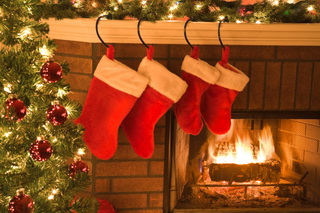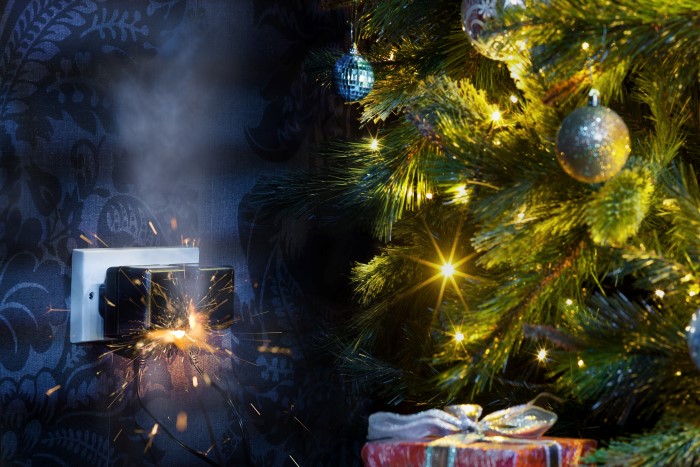Christmas trees account for hundreds of fires each year. Typically, shorts in electrical lights or open flames from candles, lighters or matches start tree fires. Well-watered trees are not a problem. A dry and neglected tree can be.
Properly maintained trees are very difficult to ignite with an open flame. Proper maintenance of a cut tree includes removing a fresh cut at least one-inch-long from the bottom of the tree, displaying the tree in a container of water and making sure that the water level never drops below the cut surface on the trunk. If the water level does drop below the cut surface, sap will re-seal the cut surface and reduce the ability of the tree to take in water from the stand.
The water is taken into the tree through capillary structures near the outer surface of the tree, so the proper cut is straight and perpendicular to the trunk of the tree. Tapering the cut actually is counterproductive because the water level is more likely to drop below the critical outer surface when it is located higher in the container.
To reduce the fire hazard of dry trees, there are no effective alternatives to proper maintenance by hydrating the tree as described above. Testing has shown that fire retardant sprays have no significant impact on reducing the flammability of trees that have not been properly watered.
As Christmas tree fires typically occur in December and January and often result in loss of life or catastrophic property losses, they receive a lot more publicity than other fires. As such, there may also be a lot of misinformation about a particular fire being spread through gossip and new sources. They also engender a lot of emotion on the part of first responders and municipal investigators such that when you investigate the fire, you will need to determine what information is based on firsthand knowledge and what information is conjecture or hearsay or from second hand sources. As an investigator or lawyer, one must be sensitive but thorough in dealing with all potential sources of information.
Christmas trees are not inherently dangerous. They do not spontaneously combust. Fires involving Christmas trees are almost always preventable. Community education in the perils of overuse or misuse of lights and decorations and with regard to the vital need to water the trees regularly, and preferably daily, has cut down on the frequency of these horrific events.
For a safe and enjoyable holiday season please remember to follow the preventive maintenance to reduce the risk of loss.
By:
Mechanical Engineer with CED Technologies, Inc.
For more information on CED experts please connect with us at one of the links below or at www.cedtechnologies.com
Connect with a CED Engineer in your region.
Submit a case or claim online.






